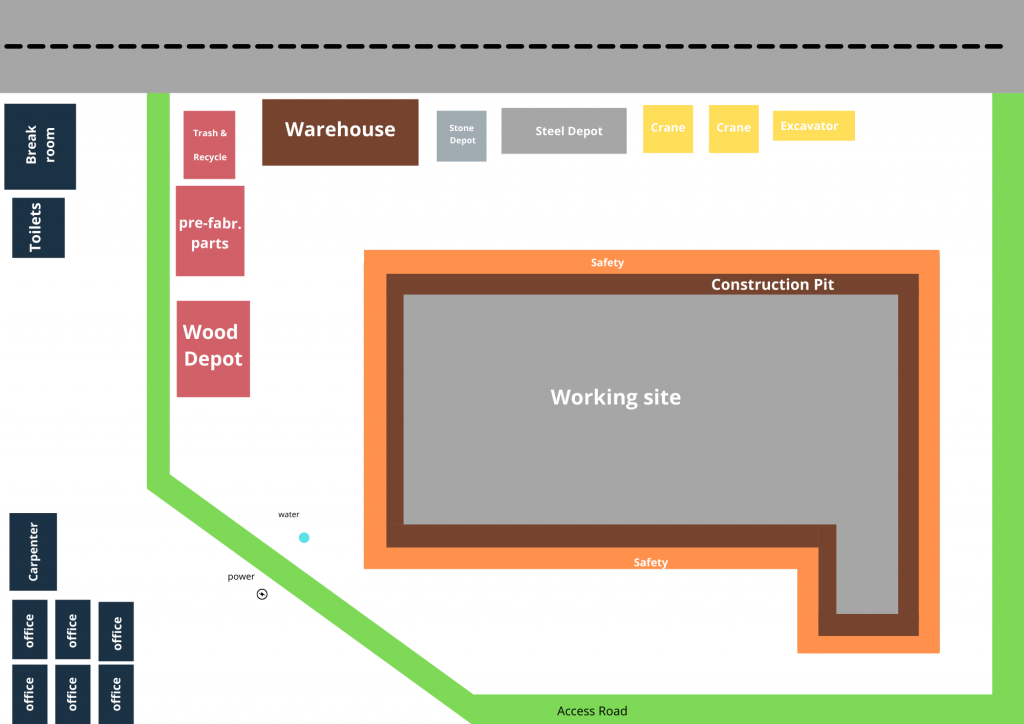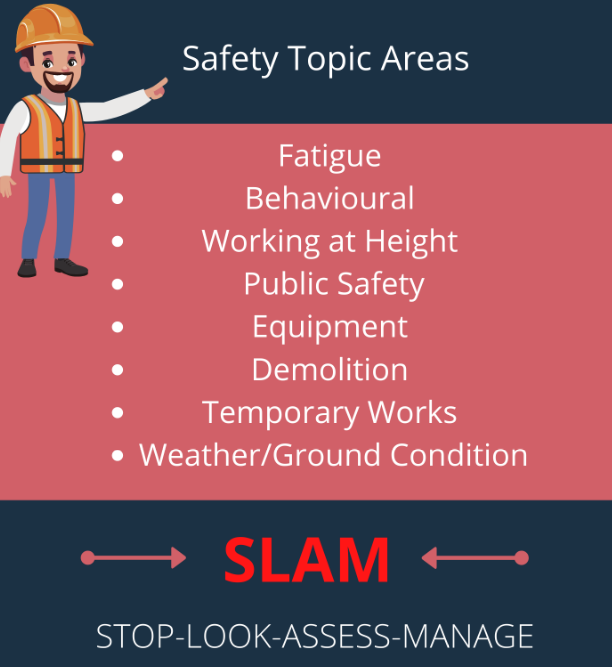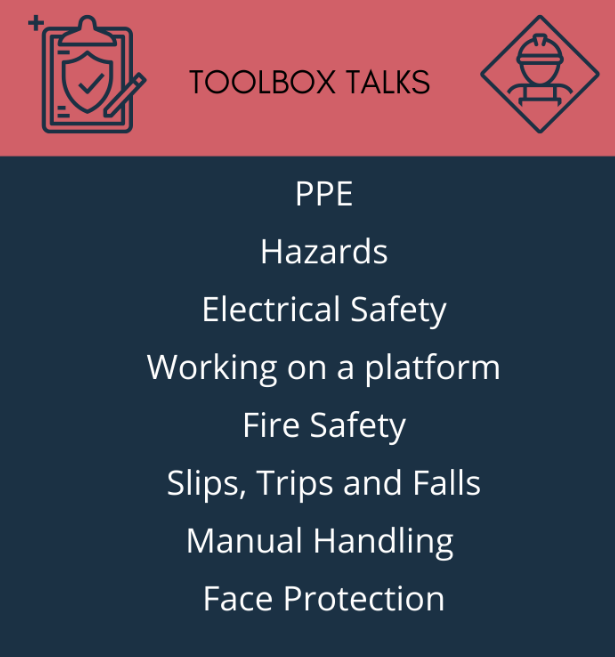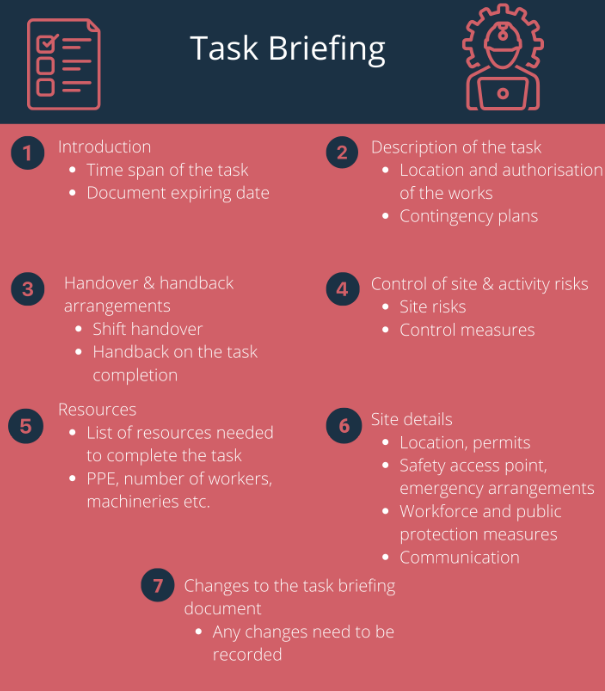Briefings are designed to provide quick and effective information setting out the requirements for a specific project. An effective brief should provide instructions on how activities should be performed on-site and give insight into the worksite’s hazards, works and site layout.
In the construction industry there are two types of briefings:
Inductions: These are delivered when there is a new starter, or if staff have not been on site for an extended period. They usually cover a large set of topics and can take between 30 and 60 minutes.
Daily briefings: They are delivered every day before entering a construction site. They tend to be shorter than inductions – up to 30 min- and relate to the shift’s works and hazards.
The above provides a series of benefits that are crucial for the success of the project. For instance, it is evidenced that delivering effective briefings reduces the risk of injuries on site, promotes interaction between workers and the management team and contribute to the well-being of the site staff.
It is up to the worksite owner to decide what information is fixed and better suited for inductions and what information is dynamic and changing, therefore, better suited for daily briefings. Below, is a list of topics you will want to include in your inductions and briefings.
Site Arrangements
Site Arrangements include identifying temporary facilities, within the perimeters of the site. The image below shows a site arrangement layout with the common facilities. Furthermore, site arrangements also include contacts for key site personnel. The requirement for such facilities depends on the size, design, location, and organisation of the construction site.

Site layouts are among the most important tasks of site management. In fact, a detailed planning of the site layout can improve the management in many factors, such as reducing waiting time and increasing productivity and safety.
Traditionally site layouts are placed at the access points of the construction site and briefed in inductions. In some situations, if a worker needs to attend a new area of the location or contact a colleague for a ad-hoc task or query, time is wasted by seeking this information, which ultimately slows productivity down.
To help maintain productivity and increase access to information, some construction industry leaders are implementing SMART site arrangements which can be accessed via personal devices with information (whether that is facilities, evacuation routes or changes to key contacts) evolving dynamically with the site.
Safety Briefing
Commonly, these are short talks regarding the health and safety hazards and risks workers may face on a construction site. Regular safety briefings at the start of the day are an efficient way to keep workers updated in the workplace.
The infographic below highlights some common safety briefing topic areas that should be addressed.

According to the Health and Safety Executive (HSE) the majority of people only retain between 25% and 50% of the information discussed in a briefing. Currently, to improve information retention, information from safety briefings is listed on notice boards and usually placed at access/egress points. Some leading construction companies have taken this a step further, providing tailored safety briefings to each workers that is delivered via a worker’s mobile device. This information is then available to each worker throughout their shift.
Toolbox Talks
Although mostly related about safety, toolbox briefings are presentations that deal with a settled issue. For instance, they can be delivered if there is a specific problem on site or be used to refresh knowledge of workers and keep them up to date with the latest developments.

As detailed in the image above, there are different type of toolbox briefings, and it is up to the management team to decide the relevant topic and the most pressing needs of the business.
A different approach on this type of briefing can be to record talks and make them available to all workers. These videos then can be stored and accessed at a later date to be used as training videos. To further increase comprehension, questionnaires can be used to test the level of understanding.
Task Briefing
Task Briefings set out an outline of the work that needs to be undertaken, the available resources and specific instructions in carrying out the shift’s activities. It is a vital tool to improve the managing and understating of the competencies of the workers. It can also be a crucial communication tool to help organisations discharge legal duties.
Due to its importance, the task briefing should be store digitally in a safe and accessible storage facility, with back-up copies stored offsite in case the original files are damaged.

The difficulty with delivering task briefings is that on many occasions they are well populated with information and can be cumbersome not only to listen to but also deliver the briefing. To improve workers’ information retention, it is important to carefully check what information is available and ensure that only relevant information is briefed.
Breaking down information in bite sized chunks helps workers digest information more readily and alongside providing access to information through innovative ways, helps improve overall safety and decrease risks on site.
To conclude it is important that briefings should be:
Relevant: they should be relevant to the type of projects the workers need to undertake.
Short and to the point (when possible): long briefings should be saved for inductions.
Easy to understand: checking that all the workers understand and follow the brief, it is not only necessary for the success of the project but it is also vital to avoid accidents on site.
Interactive: ensure users engage with the briefing by testing understanding and delivering information in a accessible format.

